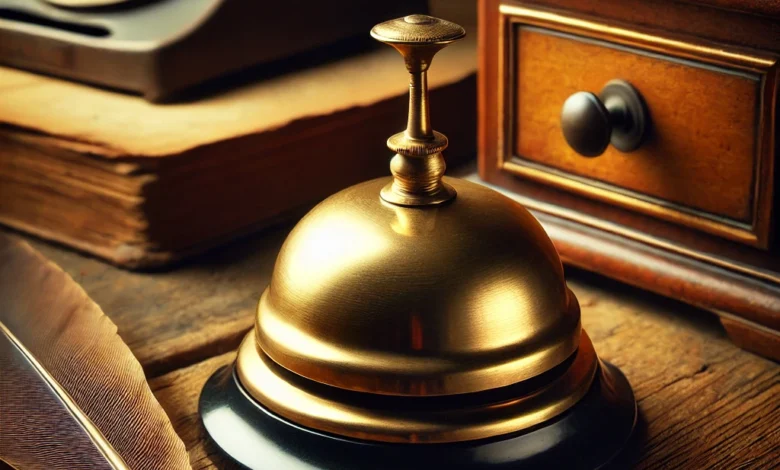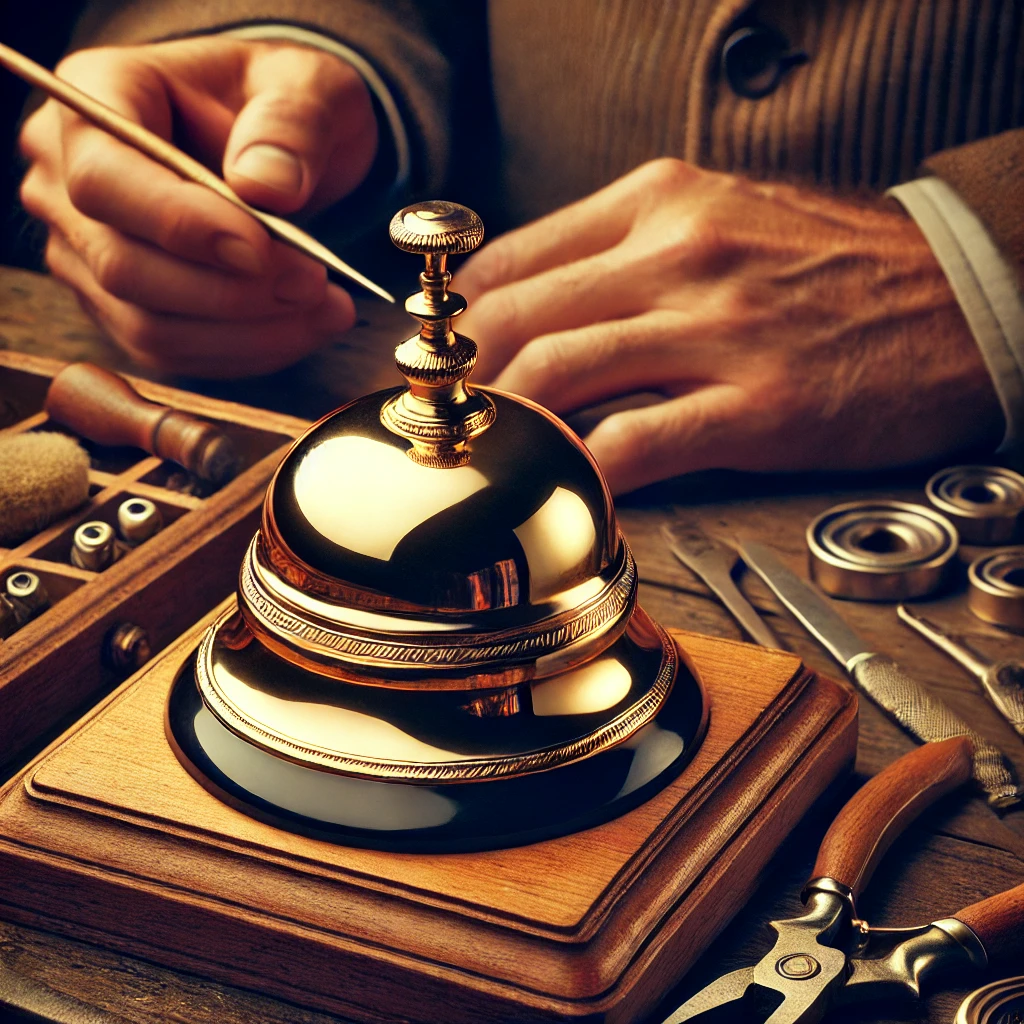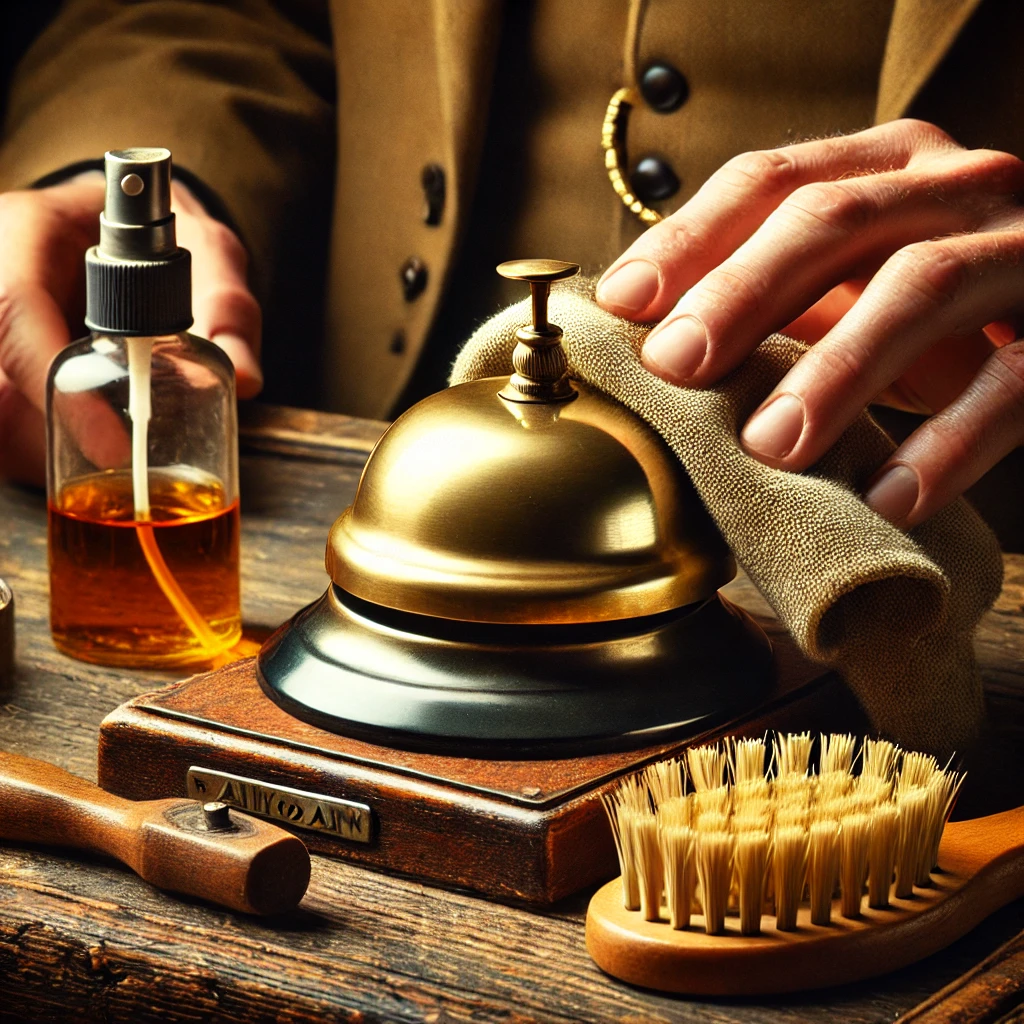
Introduction
An antique plain desk bell is more than just a simple calling device; it is a piece of history that reflects craftsmanship, elegance, and practicality. These bells were commonly found in hotels, offices, reception areas, and even homes in the 19th and early 20th centuries. Despite their simplicity, they hold a unique charm that makes them a sought-after collectible for antique lovers.
This article delves into the history, craftsmanship, types, and significance of antique plain desk bells, along with tips on collecting, preserving, and using them in modern décor.
History of Antique Plain Desk Bells
Desk bells date back to the 18th century, evolving from traditional handbells to more sophisticated mechanical bells. During the Victorian and Edwardian eras, desk bells became a common feature in homes, hotels, and businesses, signaling requests for service or attention.
1. Early Desk Bells (18th Century)
- Initially, handbells were used in homes and establishments.
- The first desk bells were push bells, which required manual pressing.
- They were usually made from brass, bronze, or iron.
2. Victorian Era (19th Century)
- The design became more intricate, often featuring ornate engravings.
- Hotels and businesses started using them as reception bells.
- Mechanical advancements led to spring-loaded and lever-action bells.
3. Early 20th Century
- More streamlined, plain desk bells became common.
- Used in offices, banks, and front desks for efficient communication.
- Often made of polished brass, nickel, or silver-plated metals.
Antique plain desk bells from this period are now collectible artifacts, valued for their history, craftsmanship, and functionality.
Craftsmanship and Materials

Antique plain desk bells were meticulously crafted using high-quality metals and traditional techniques. Their simple yet elegant designs make them a perfect blend of beauty and functionality.
1. Materials Used
- Brass – Most common material, known for its durability and aesthetic appeal.
- Bronze – Offers a rich patina, making it a favorite among collectors.
- Nickel-Plated Brass – Used for a shinier, more modern look in early 20th-century designs.
- Iron and Steel – Some models were made from iron for added weight and sturdiness.
2. Design Features
- Plain, Smooth Finish – Unlike ornate Victorian bells, plain desk bells had minimalist designs.
- Push-Button Mechanism – Allowed quick ringing with one-touch activation.
- Dome Shape – Common design, featuring a rounded top with a central push mechanism.
- Engraved or Stamped Markings – Some bells featured manufacturer marks or patent dates.
Types of Antique Plain Desk Bells
While all desk bells serve the same purpose, their mechanisms and styles vary. Here are the most common types of antique plain desk bells:
1. Push-Button Desk Bell
- Most common type.
- Features a button on top that produces a ringing sound when pressed.
- Often found in hotels, offices, and general stores.
2. Tap Bell (Dome Bell)
- Has a dome-shaped top that is tapped to produce a sound.
- Simple yet effective, found in businesses and reception desks.
3. Lever-Action Desk Bell
- Operated by pulling a small lever to ring the bell.
- Often used in bank teller desks and service counters.
4. Spring-Loaded Desk Bell
- Uses a spring mechanism for a more resonant sound.
- More commonly found in luxury hotels and upscale businesses.
Each type has its own historical significance, making them unique collectibles.
Why Collect Antique Plain Desk Bells?

For collectors and antique enthusiasts, an antique plain desk bell is a small yet valuable addition to their collection. Here’s why they are so desirable:
1. Historical Significance
- Desk bells were essential communication tools in businesses and homes.
- They reflect different eras of craftsmanship and design evolution.
2. Timeless Craftsmanship
- Made from solid metals that withstand time.
- Handcrafted details add uniqueness to each piece.
3. Functional and Decorative Appeal
- Still usable for home offices, reception desks, or antique displays.
- Adds a touch of vintage elegance to any setting.
4. Investment Value
- Genuine antique bells can increase in value over time.
- Rare pieces with manufacturer markings or unique mechanisms are especially valuable.
How to Identify an Authentic Antique Desk Bell
If you’re looking to purchase an authentic antique plain desk bell, here are key factors to consider:
1. Age and Markings
- Look for manufacturer stamps or patent numbers.
- Older bells may have worn surfaces and patina, indicating age.
2. Material and Weight
- Authentic bells are heavier due to solid metal construction.
- Avoid lightweight, hollow bells that may be modern reproductions.
3. Sound Quality
- Genuine antique bells produce a clear, resonant ring.
- Cheap imitations may have a dull or weak sound.
4. Mechanism and Functionality
- Check if the button, lever, or spring mechanism works smoothly.
- A functioning antique bell adds to its value and authenticity.
5. Provenance and Documentation
- Purchasing from reputable antique dealers or auctions ensures authenticity.
- Ask for any certificates or historical documentation if available.
Caring for an Antique Plain Desk Bell

Proper maintenance ensures your antique desk bell remains in excellent condition for years.
1. Cleaning and Polishing
- Use a soft cloth to remove dust.
- For brass and bronze bells, apply a mild metal polish.
- Avoid harsh chemicals that may damage the original patina.
2. Storage and Display
- Keep in a dry, temperature-controlled environment.
- If displaying, place it on a felt-lined surface to prevent scratches.
3. Avoid Overuse
- While these bells are functional, excessive use can wear out internal mechanisms.
- If the mechanism weakens, consider professional restoration.
Modern Uses of Antique Desk Bells
While primarily collectibles, antique plain desk bells can still serve practical and aesthetic purposes today.
1. Vintage Home Décor
- Adds a touch of nostalgia to study rooms, offices, or reception areas.
- Complements antique furniture and retro themes.
2. Hotels and Reception Desks
- Some vintage-themed hotels use antique bells for authentic ambiance.
3. Personal Desk Accessory
- Functional for home offices, providing a unique way to call for assistance.
4. Gifts for Collectors
- A great gift idea for antique enthusiasts or history lovers.
Where to Buy Antique Plain Desk Bells
If you’re interested in purchasing an authentic antique desk bell, consider these options:
1. Antique Shops and Flea Markets
- Great for browsing physical pieces and checking authenticity.
2. Online Auctions
- Platforms like eBay, Christie’s, and Sotheby’s offer collectible desk bells.
3. Antique Fairs and Collectors’ Markets
- Ideal for finding rare and unique desk bells.
4. Reputable Antique Dealers
Ensure authenticity and sometimes provide documentation.
Conclusion
An antique plain desk bell is a small yet significant piece of history, offering both functional value and aesthetic appeal. Whether you’re a collector, historian, or someone who appreciates vintage craftsmanship, these bells add a touch of old-world charm to any setting.
Investing in an antique desk bell not only connects you to the past but also preserves a beautiful relic for future generations.
FAQs
Q1: What is the average price of an antique plain desk bell?
A: Prices range from $50 to $500, depending on age, material, and rarity.
Q2: How do I clean a tarnished antique desk bell?
A: Use a soft cloth, mild polish, and avoid abrasive cleaners to maintain patina.
Q3: Are antique desk bells a good investment?
A: Yes! Authentic and rare pieces increase in value over time.
Q4: Where can I sell an antique desk bell?
A: Consider online auctions, antique shops, and collectors’ markets.
Q5: How can I restore a broken desk bell?
A: Seek professional restoration services for mechanism repairs.